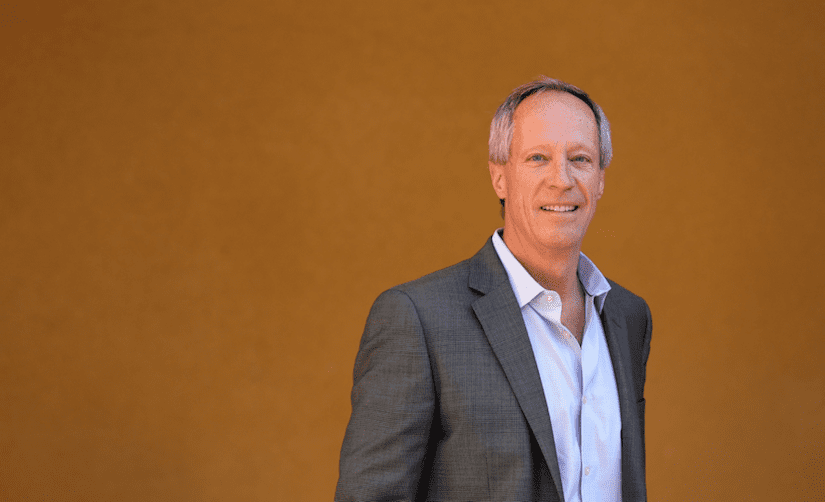By Tom Still
MADISON, Wis. – An overused word to describe the connections between technology, startups and angel or venture capital investments is “ecosystem,” which implies that startups and the people who help support them are akin to a naturally occurring rain forest.
If only it was that simple. Mother Nature can’t spawn what it takes to build a healthy structure for researchers, innovators, company builders, service experts and investors to take ideas from the lab bench to the marketplace. It takes people who bring a combination of expertise, passion and a high tolerance for risk to a social network that values those talents and connections.

photo courtesy of Fogarty Insitute
For many people, the Silicon Valley is the exemplar of that structure. Home to many of the world’s most successful tech companies, it was born in the area between San Jose and San Francisco in the 1940s and ‘50s because a Stanford University engineering dean had the wild notion that faculty with good ideas should start their own companies.
The idea carried over from engineering to computer sciences to medical science, where Stanford’s Byers Center for Biodesign teaches med-tech innovation to teams of doctors, engineers and business professionals who bring a cross-functional approach to turning ideas into products.
The Wisconsin-born and educated co-director of the Byers Center, Dr. Tom Krummel, will talk about its work across the country and around the world Nov. 5 when he speaks at “Innovation Day,” a half-day conference produced by the Wisconsin Alumni Research Foundation. That event will be followed Nov. 6-7 by the Wisconsin Early Stage Symposium, also at Monona Terrace Convention Center.
Will Dr. Krummel, a pioneer in surgical robotics who has been a part of more than 20 early stage medical device companies, reveal the “secret sauce” of what made Silicon Valley cook?
No, he said, because there isn’t one. And if there was such a potion, it wouldn’t necessarily work for others.
“We don’t have a secret sauce, but we do know a thing or two about core ingredients,” said Krummel, who was raised in Racine and earned degrees from UW-Parkside and the Medical College of Wisconsin.
What are those common ingredients? Here’s a list that applies to academic research centers, many of which he will detail in his talk, “The Best Way to Predict the Future is to Invent It.”
 Where there is a major research university in place, make sure the expertise can escape the ivy-covered halls. “There should be a porous wall between the university and the rest of the world,” he said, to reinforce the interplay between technology “push” and market “pull.”
Where there is a major research university in place, make sure the expertise can escape the ivy-covered halls. “There should be a porous wall between the university and the rest of the world,” he said, to reinforce the interplay between technology “push” and market “pull.”- Encourage a mental mindset of risk tolerance. “If you think about the Silicon Valley, think first about the kind of people who settled this state. They were miners during the gold rush of the late 1840s who dropped everything to come here,” Krummel said.
- Move beyond publishing academic papers and moving on to the next grant; turn what you learn into action. “(Researchers) should ask themselves, ‘Do I have an interest in closing the final mile?’ You can write papers and speak at symposia and tell yourself, ‘We’ll leave the final mile to someone else.’ But often the best person to cover the final mile is the researcher, working with a team that brings other skills to the race.”
- Technology transfer works better in universities where the science disciplines are paired with other disciplines, such as a strong business school.
- If universities don’t have what is needed in-house or on-campus, import help from elsewhere. Even major universities can’t be storehouses of all expertise needed to build products and companies that change solve problems.
- Stick with it. “Don’t be afraid… go do it,” said Krummel, when he asked how he balanced his work as a surgeon with spinning out ideas, products and companies. “Physicians see the problems. We know the faces. Our failures and shortcomings come when things don’t work as they should. That becomes a powerful motivator in terms of why someone would want to do this.”
That final ingredient appears to have worked for the Byers Center, as more than 2.8 million patients have been treated by tools and technologies developed by the program. Now, Krummel hopes to pay back Wisconsin through his work as a board member for the Madison-based Morgridge Institute for Research, which operates at the cusp of translating research into products.
“This state and its people matter to me,” Krummel said. Welcome back to the rain forest, doctor.
Still is president of the Wisconsin Technology Council. He can be reached at tstill@wisconsintechnologycouncil.com
###



